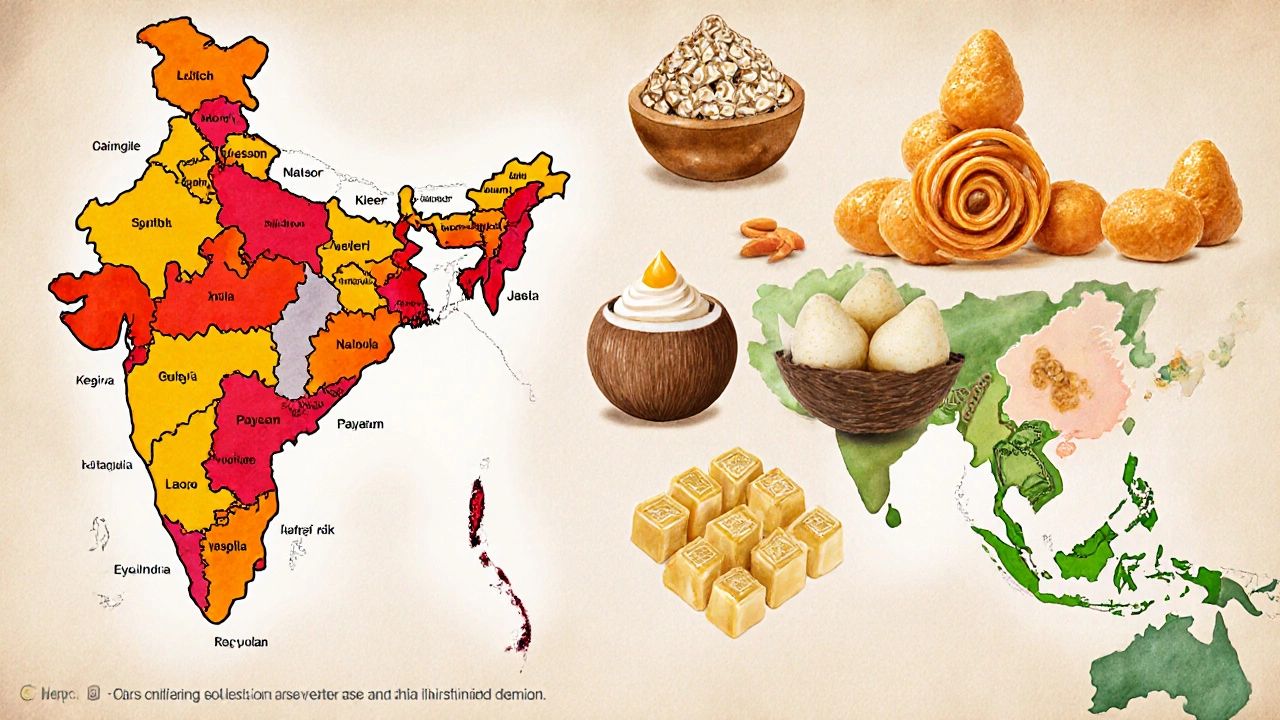Indian Dessert Recipes: Sweet Traditions, Storage Tips, and Healthy Swaps
When you think of Indian dessert recipes, a wide range of sweet treats made with milk, sugar, nuts, and spices, deeply rooted in cultural and religious practices. Also known as mithai, these desserts aren't just food—they're part of celebrations, rituals, and daily comfort. Whether it's a bite of gulab jamun at a wedding or a small piece of jalebi handed out after a festival, these sweets carry meaning. In Hindu traditions, offering sweets is a way to share joy, honor guests, and express gratitude. That’s why you’ll find them at births, weddings, Diwali, and even when someone recovers from illness.
But not all Indian desserts are the same. Some, like gulab jamun, deep-fried milk dumplings soaked in sugar syrup, are rich and indulgent. Others, like kheer, a creamy rice pudding made with milk, cardamom, and nuts, can be lighter and even served warm. Then there are modern twists—desserts made with jaggery instead of sugar, or those using almond flour to cut carbs. The truth? You don’t have to choose between tradition and health. Many Indian sweets, when made with smart swaps, can fit into a balanced diet. In fact, some of the most popular ones, like barfi, a dense fudge-like sweet made from condensed milk and nuts, have been made healthier for decades in rural homes using less sugar and more nut powder.
Here’s the thing: these desserts don’t last forever. If you’ve ever left a box of laddoos on the counter and found them sticky or sour, you’re not alone. That’s why knowing how to store them matters. Some sweets last weeks in the fridge, others only a few days. And it’s not just about refrigeration—humidity, packaging, and even the type of sugar used can change how long they stay fresh. You’ll find posts here that break down exactly how long each type lasts, what signs to look for when they go bad, and how to revive them without losing flavor.
And if you’ve ever wondered why some Indian sweets are considered healthier than others, you’re not just imagining it. There’s real science behind why certain ingredients—like jaggery, coconut, or sesame seeds—can offer more than just sweetness. You’ll see posts that compare sugar vs. jaggery, show you which sweets are low-GI, and even tell you how to make diabetic-friendly versions without sacrificing taste.
From the oldest sweets still made today to the most popular ones sold worldwide, this collection covers everything you need to know about Indian dessert recipes—not just how to make them, but why they matter, how to keep them fresh, and how to enjoy them without guilt. Whether you’re cooking for a festival, trying to eat better, or just curious about the culture behind the sugar, you’ll find practical, no-fluff answers here.
Popular Indian Desserts: A Sweet Journey Across India
Explore the most beloved Indian desserts, learn their regional roots, key ingredients, simple recipes, and when they’re traditionally served.
